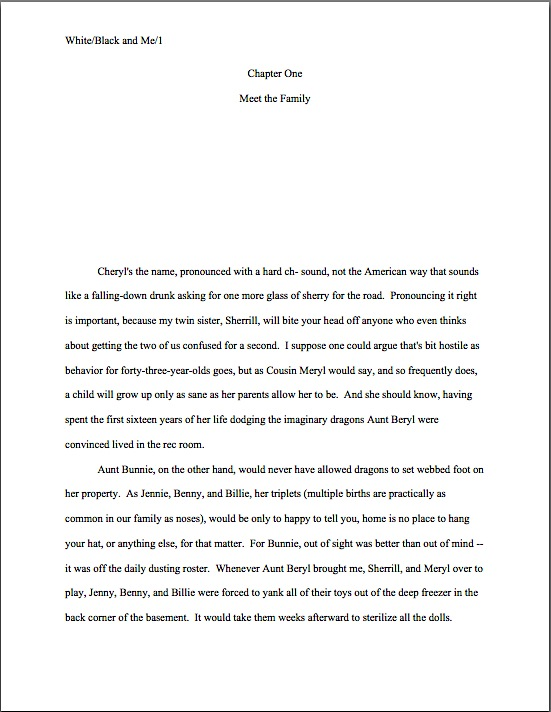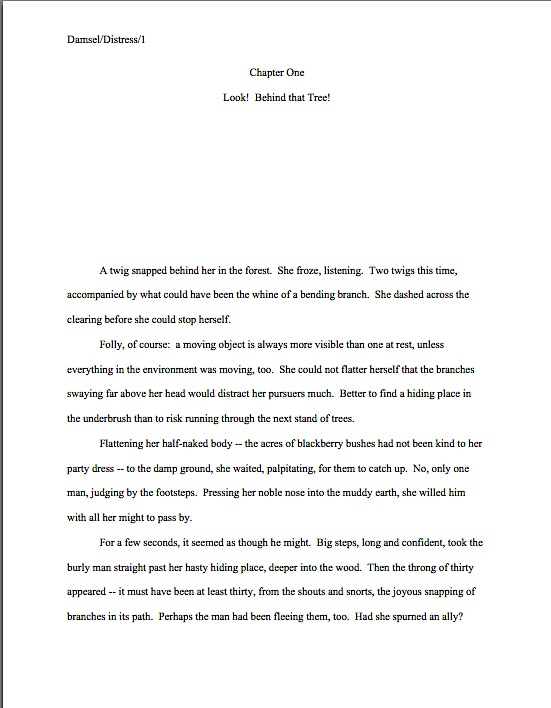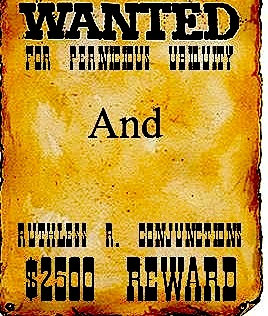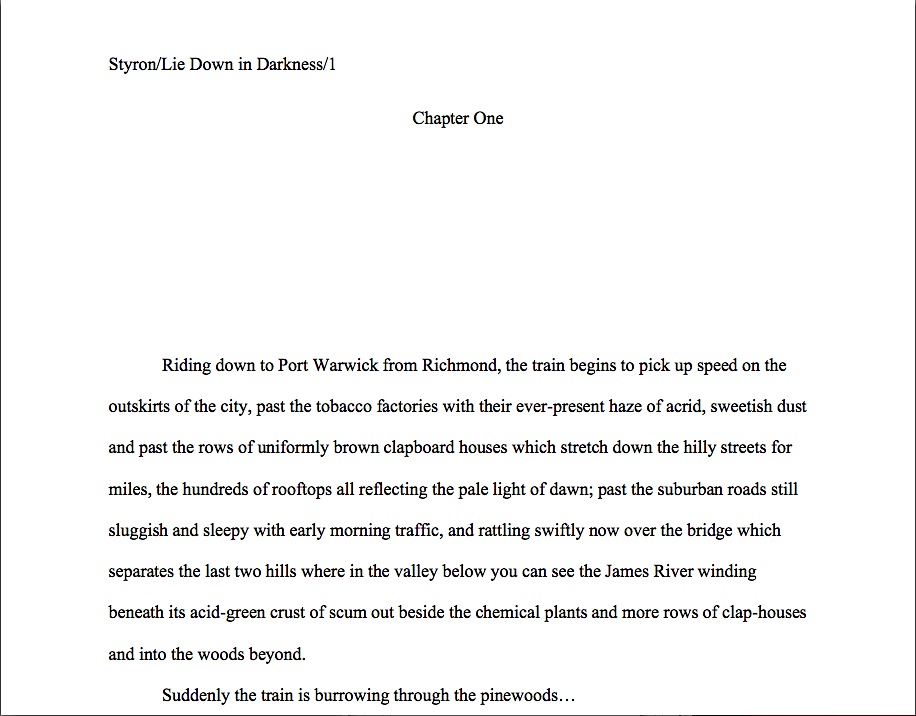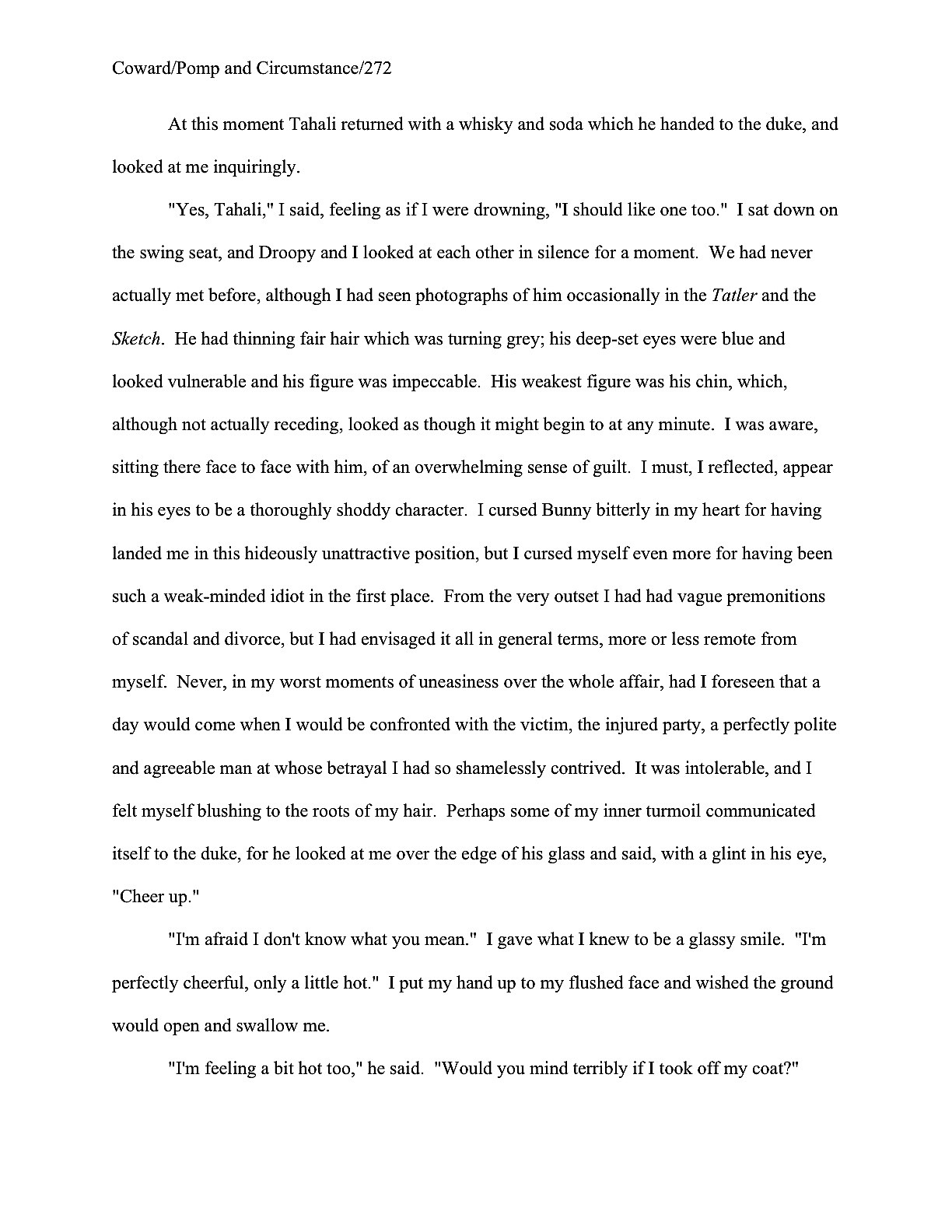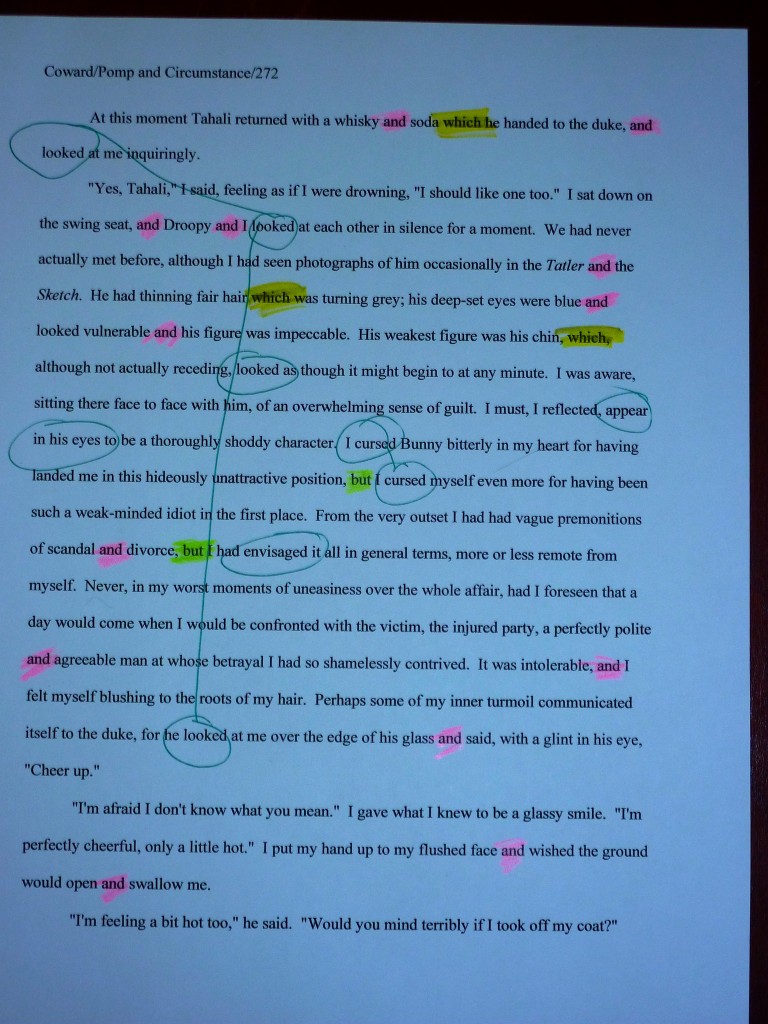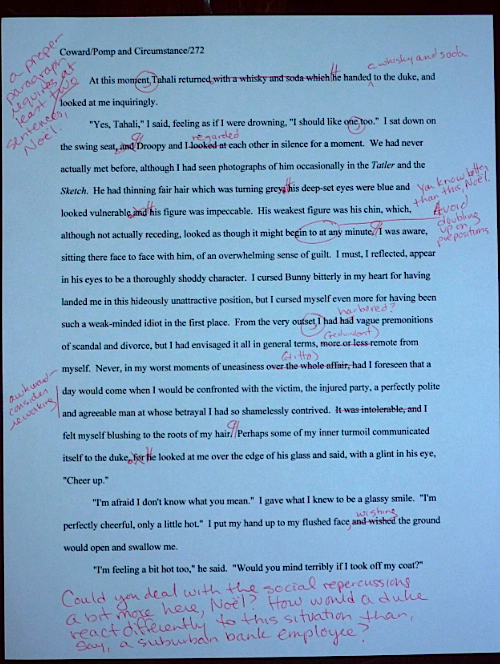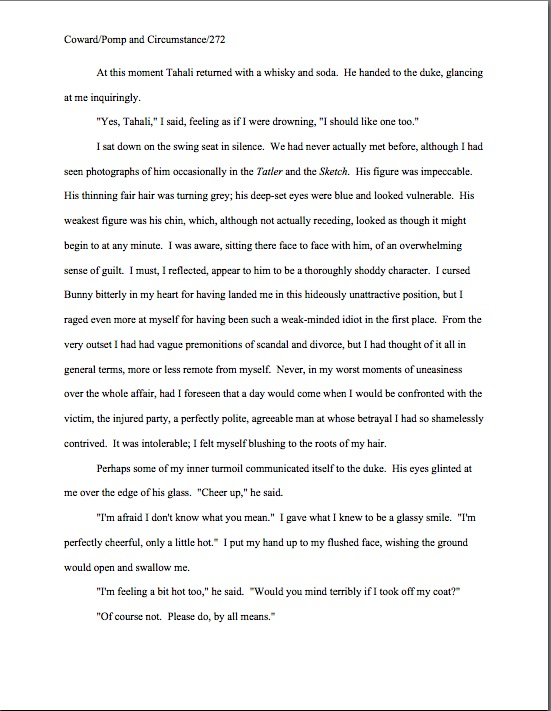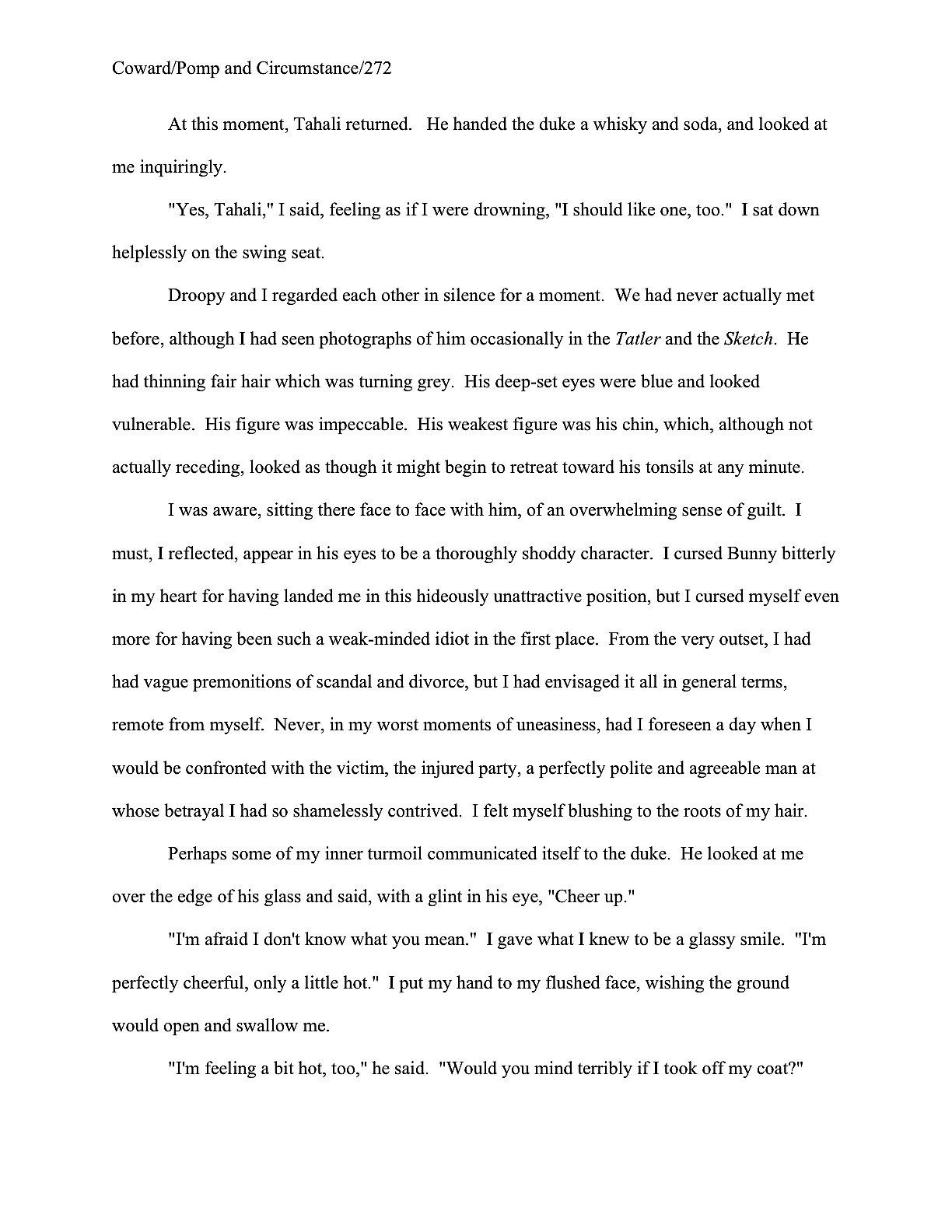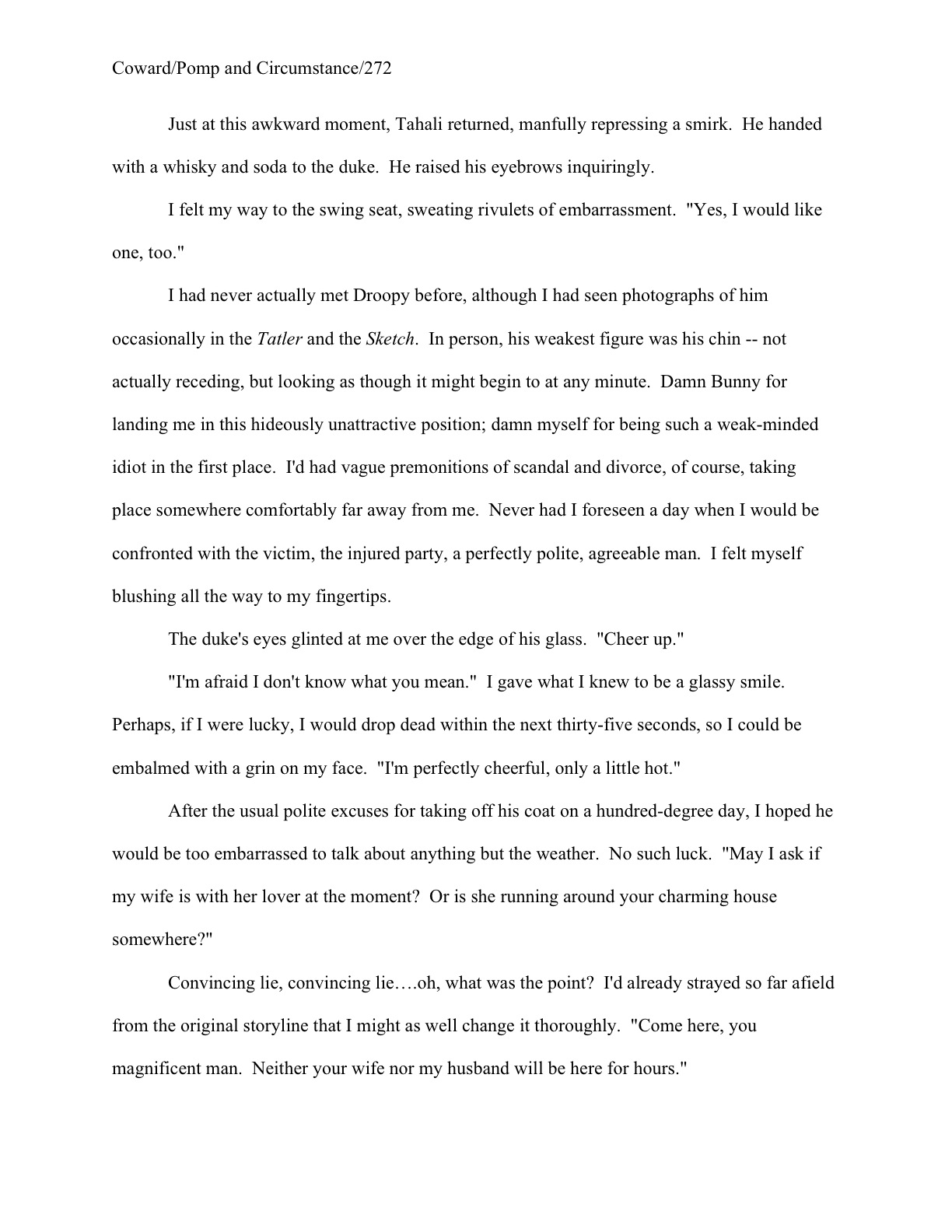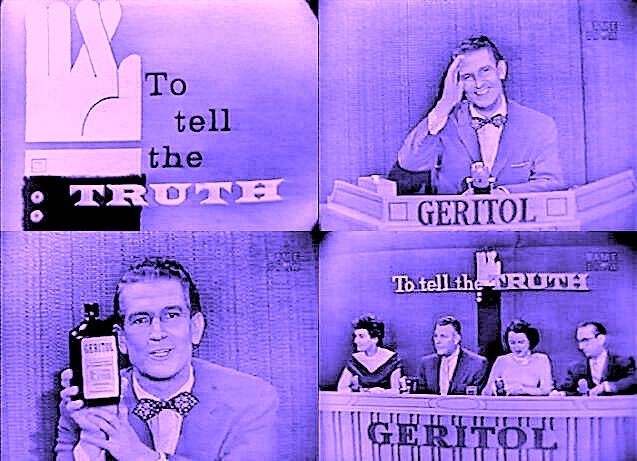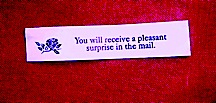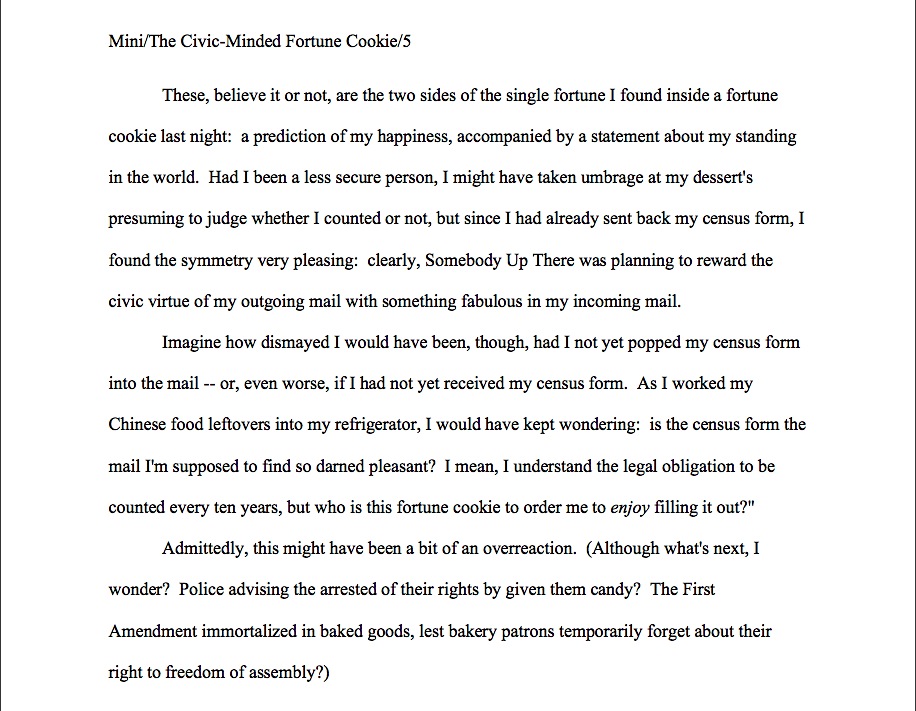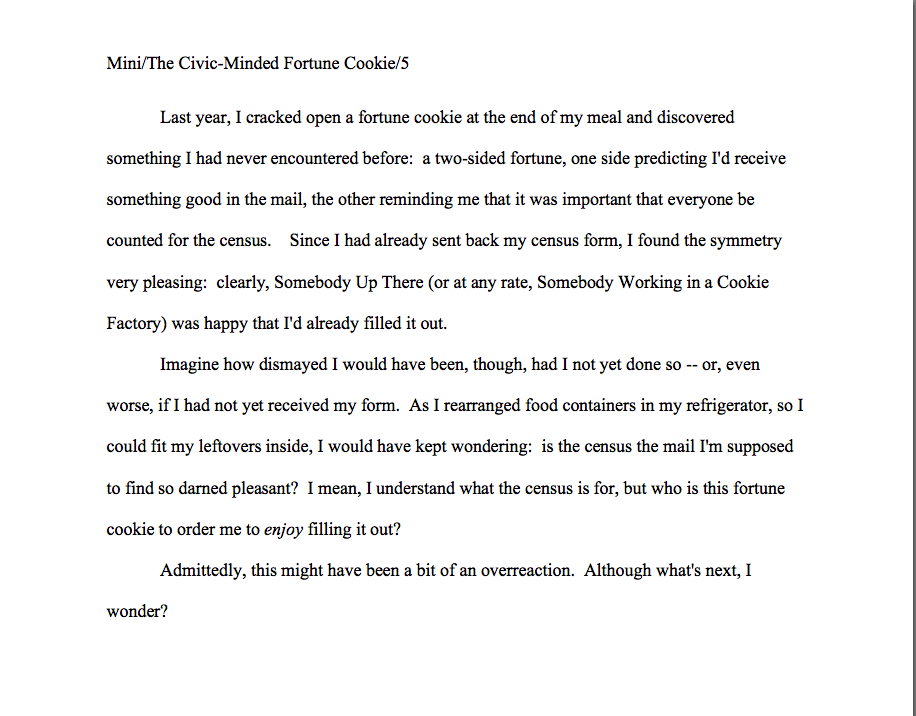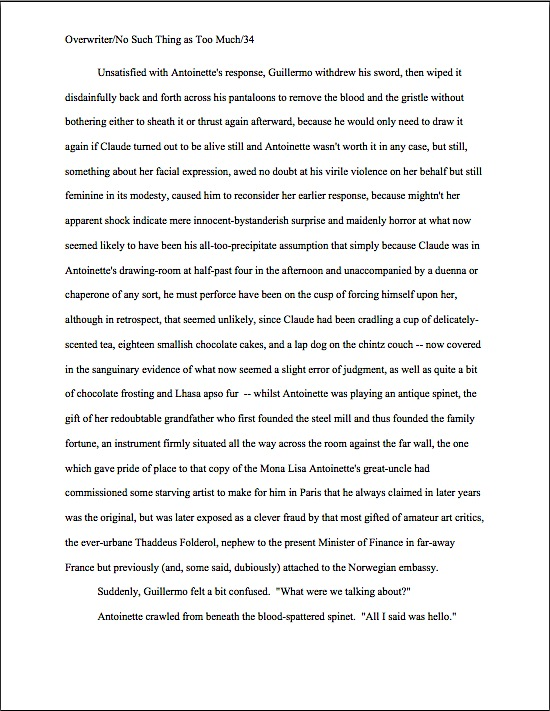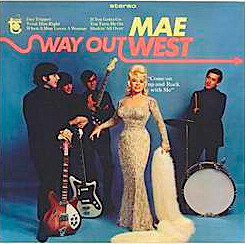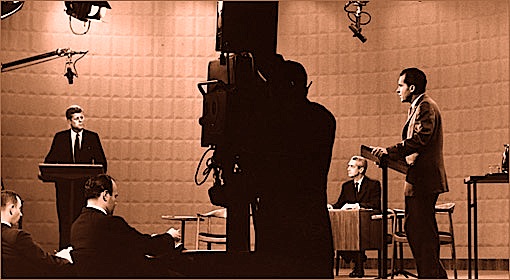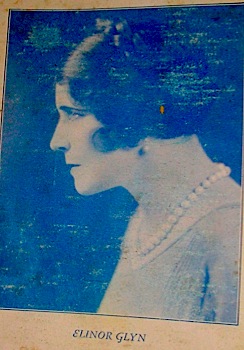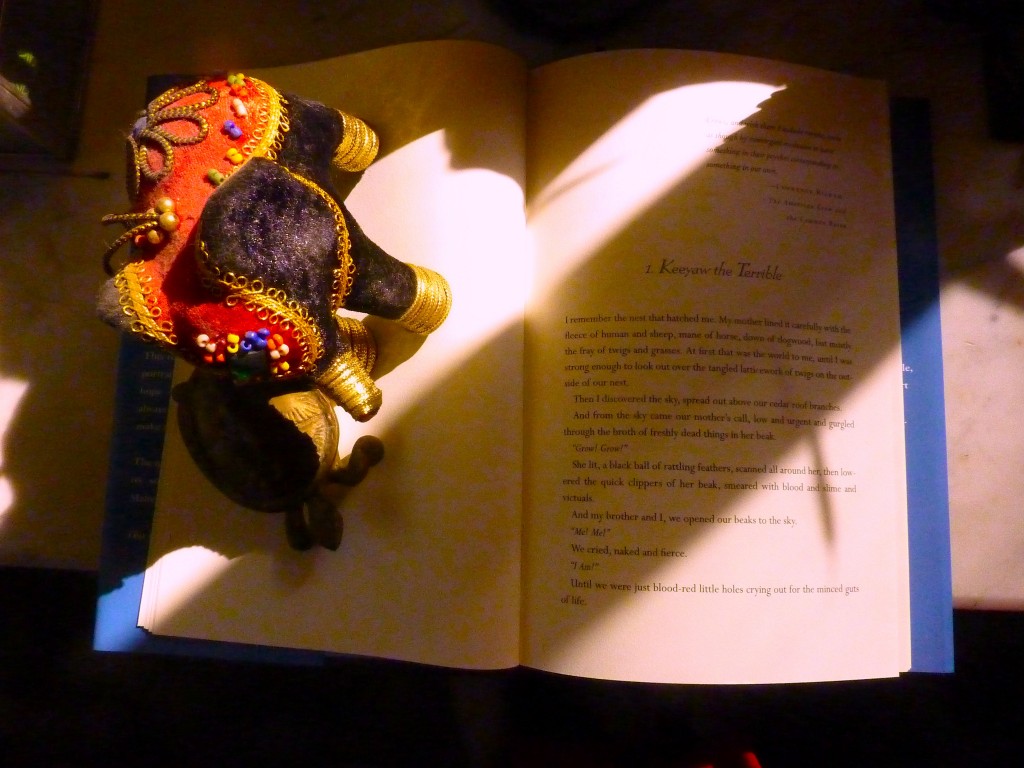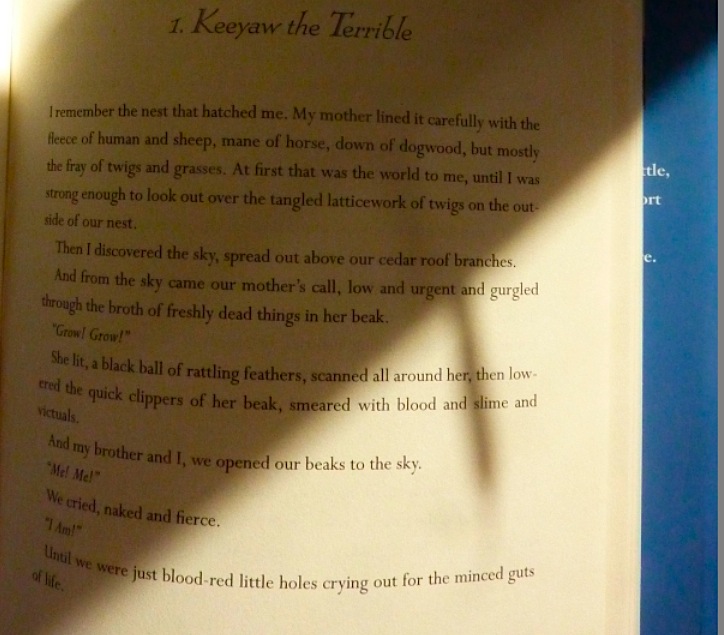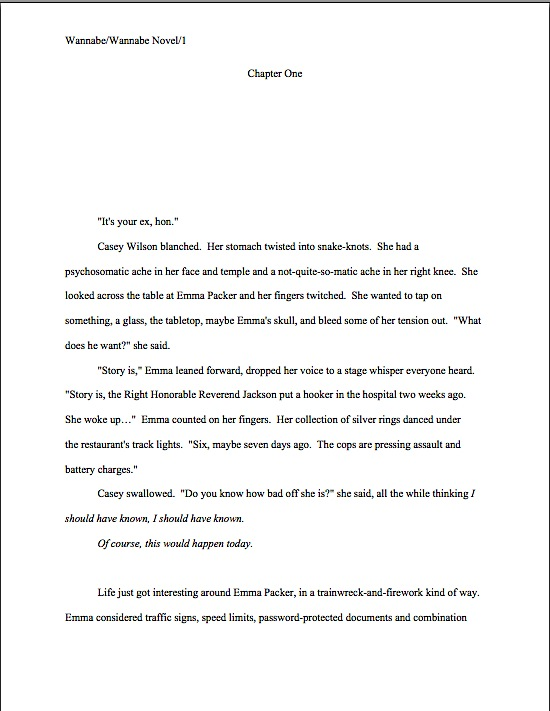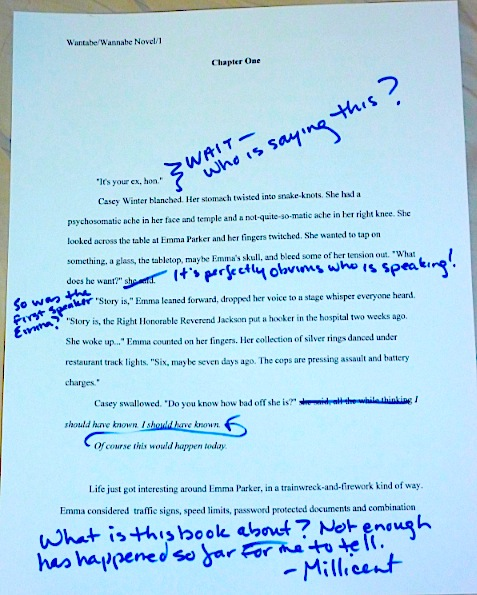I honestly hadn’t intended to take the last few days off from blogging, but I assure you, I have a dandy excuse. To give you a hint, I invite you to contemplate the riddle of the Sphinx: what animal walks on four legs in the morning, two at noon, and three at night?
On to the day’s business — or rather, the business of last week. Scouring my to-blog-about list for amusing and thought-provoking topics to while away the time before the advent of Queryfest, my annual foray into all things query-related, I came across a terrific question from reader Kelly:
I have a question about plot clichés, if you have the chance to address it. Obviously, the “it was all a dream” won’t fly. What other common plot twists do those of you who see so many manuscripts just groan about? Thanks and feel better soon.
That bit at the end will tell you just how long even very good questions sometimes linger in my hey, that would make a great post pile: kind Kelly was wafting me positive energies immediately after my car crash last year. There’s been some recent progress in that area, by the way: after 14 months, I’m finally walking without a cane.
Can tap-dancing be far behind?
So if I’m honest about it, responding to Kelly’s question is really the business of last year. That seems oddly appropriate, given one of the publishing world’s most common complaints about writers: a fondness for procrastination.
Oh, don’t grimace; everyone procrastinates a little. It’s healthy not to be too rigid. Besides, one of the most important lessons any writer of book-length work has to learn is that a full-length manuscript is not the kind of thing that even the most gifted crafter of prose can polish off in a day, a week, or a month.
Oh, some writers (including yours truly) can indeed draft new text very quickly, but that’s not the issue. Writing a book requires consistent, patient application, not merely short, intense bursts of endeavor. So does revising a manuscript. Yet since most of us do our best work if we can devote some unbroken time to it, it can be very tempting to put off diving in — or diving back in — until we can devote a whole day, week, or month to it, isn’t it?
And that temptation, boys and girls, is why most serious writers have woken up on at least one fine spring morning, sat bolt upright in bed, and shouted, “Wait — how much time has passed since I swore that I was going to finish that revision? Or start it?”
Or exclaimed, “Hey, wasn’t my New Year’s resolution to send out ten queries per week? Have I sent out even one this month?”
Or moaned, “Oh, my God — the agent of my dreams requested pages six months ago, and I’m still revising. Should I take another run at Chapter 152, or should I pop the whole shebang in the mail as is? What if she doesn’t want it anymore?”
I’m not bringing this up to depress all of you who swore that Labor Day (or the Fourth of July, or Valentine’s day, or St. Swithin’s day) was going to be the moment you sprung into action, honest. Nor am I passing judgment on the many, many aspiring writers whose lives swamped their good intentions. I’m not even changing the subject so that I may put off answering Kelly’s excellent question for a few more minutes.
I’m bringing it up, if you must know, because writers who procrastinate so often create characters that procrastinate. Seriously, it’s one of Millicent the agency screener’s most frequent complaints about how novelists and memoirists plot books: characters irk her by sitting around and thinking too much.
Or, to mix things up a little, by sitting around and talking through the problems with their best friends, coworkers, mothers, fathers, or, depending upon book category, the people they are about to try to murder. Especially, as is often the case in novel submissions, when these little chats over coffee, in bars, over lunch, over a telephone, or in hastily-improvised torture chambers consist largely of the protagonist recapping conflict that reader has already seen.
How, from an editorial standpoint, could that not seem redundant? “Criminy, move on,” Millicent scolds the text in front of her. “The point of novel narration is not to convey every single thing that happened in the book’s world, but to tell a story in a lively and entertaining manner!”
Because I love you people, I shall spare you what she hisses at memoir submissions in which the narrator agonizes for fifty or sixty pages on end about whether to confront someone who clearly needs some confrontation — only to decide not to do it after all. In fiction and nonfiction alike, her preference nearly always leans toward the active protagonist given to making things happen, rather than a passive one to whom things happen.
Half of you clutched your chests at some point over the last four paragraphs, didn’t you? Relax; I’m not about to suggest the all-too-often-heard advice on this point: telling writers never to show their protagonists thinking is akin to asserting that no character, however devoted to the color pink, may ever be depicted wearing it. Intelligent characters frequently think, and one-size-fits-all writing rules are almost invariably wrong a great deal of the time.
What I am suggesting, heart-clutchers, is merely that Millicent, like most professional readers, has from long experience developed a finely-tuned sense of how much rumination is too much, as well as when it starts to feel repetitious. To eyes trained to spot textual and conceptual redundancy, even a single repeated thought pattern can jump off the page. Small wonder, then, that showing the complexity of a problem by depicting the protagonist revisiting the same set of doubts over and over again is a notorious professional readers’ pet peeve.
Frequently, their impatience is justified: while deeply-felt internal conflict can be quite interesting on the page, most protagonists in first-person and tight third-person narratives don’t think about problems differently each time. Instead, the writer seeks to have the page mirror the way people mull over problems in real life: with redundant logic, facing the same fears and rehashing the same options on Monday as on Friday.
Or the following Friday. Or two years from Friday.
“God, I wish that this writer had never seen a production of Hamlet,” Millicent has been known to murmur over the fourth slow-moving protagonist of the day. “Would it be too much to ask the narrative to get out of this character’s head long enough for her to do something? It wouldn’t even have to advance the plot — I’d settle for her taking up lion-taming or developing a sudden passion for spelunking. Anything, so she gets out of her chair and moves around the world!”
“But Anne!” I hear some of you chest-clutchers point out, and with good reason, “people honestly do fall into thought loops when they’re worried about something, especially if they lean toward the compulsive in general. I’m sorry if it bores Millicent, but I’m trying to represent reality here: the human psyche is not always bent upon producing entertainingly diverse thought patterns.”
Perhaps it isn’t, but you should be. It’s a writer’s job not just to hold, as ’twere, the mirror up to nature, but to create a result that will be a pleasure to read. Redundant thoughts, like redundant action, have a nasty habit of discouraging readers from continuing to turn pages. Obsessive characters can be very interesting, but as the pros like to say, it all depends on the writing: it’s very, very easy for realistic depictions of recurrent thought or even feeling to become positively soporific on the printed page.
Not as easily spotted a cliché as it was a dark and stormy night or you may be wondering why I called you all here, admittedly, but the rumination-obsessed protagonist is actually more common in submissions these days than either of these well-worn tropes. None of these are as ubiquitous as teenagers who roll their eyes, of course, or people under 50 who say whatever and like, but all are equal-opportunity Millicent-annoyers.
Now the rest of you are clutching your chests, but at this late date, most adult readers, even non-professional ones, have seen enough compulsive thought patterns on the page to recognize it within a line or two. At most, it will take them a couple of paragraphs to catch on. How, then, is the writer to maintain interest and tension throughout pages and pages of it?
Honestly, a little obsessive-compulsion goes a long way on the page. Millicent’s seeing less of it these days than when the TV show MONK rendered OCD such a popular character quirk; if a hit TV show or movie contains a noteworthy character trait or plot twist, it’s a safe bet that agencies will be receiving hundreds of iterations of it over the next 2-5 years. The Millies of the early 1980s could have wallpapered both North and South Korea entirely in manuscripts that resembled M*A*S*H, for instance; for the last decade, it’s been rare that a police procedural submission does not include a scene reminiscent of LAW AND ORDER or CSI. And frankly, our time on earth is too precious to waste time toting up how many SF and fantasy submissions fairly reeked of the influence of STAR WARS and STAR TREK.
It’s not that some of the borrowed characters and quirks are not inherently entertaining; in a good writer’s hands, they certainly can be. There’s also something to be said for adhering to the conventions of one’s chosen book category: in a Western, readers expect a confrontation between the fellows in the white hats and the black, just as readers of women’s fiction expect their protagonists to grow and change over the course of the story.
By definition, though, what none of these elements can ever be is fresh.
Which goes right to the heart of Kelly’s question, does it not? While the list of premises, plot twists, and character traits that might set Millicent’s teeth on edge changes perpetually — what might have riled her Aunt Mehitabel when she was just starting out as a reader in the mid-1970s is substantially different from what might occur often enough to get on Millie’s nerves today, or her younger sister Margie five years from now — the basic principle remains the same: even if the writing is good, if she’s seen it before, it’s not going to seem fresh or surprising on the page.
Remember, Millicent is not only charged with the task of sifting through submissions to find great writing and original voices; she’s also looking for unique takes on reality and plots that she hasn’t seen before. While imitation may be the sincerest form of flattery (which I sincerely doubt), at submission time, not seeming like a rehash of the most recent bestseller or blockbuster film is a significant asset.
I know, I know: it’s not all that uncommon for agency submission guidelines to sound as though their Millicents are eagerly awaiting a carbon-copy of whatever is hitting the top of the bestseller lists today. Indeed, sometimes they are looking for copycats. Even with monumental bestsellers like the TWILIGHT series or BRIDGET JONES’ DIARY, though, it usually doesn’t take too long before Millie and her boss are saying, “Oh, no, another knock-off? I want the next great bestseller, not what was hot two years ago.”
Don’t believe me? How hard do you think it would be to sell BRIDGET JONES’ DIARY as a fresh manuscript today? It would simply seem derivative.
That’s why, in case you had been wondering, those oft-repeated experiments in which some bright soul submits the first 50 pages of some classic like PRIDE AND PREJUDICE (1813) to an array of present-day agents and/or publishing houses, in an attempt to test whether their Millicents would know great literature if it fell in their laps, invariably fall flat. Of course, PRIDE AND PREJUDICE would get rejected today; as a new manuscript, it would seem completely lifted from Jane Austen. To a reader familiar with English novels of the period, even the title would seem unoriginal: the phrase PRIDE AND PREJUDICE (in all caps, no less) is repeated no fewer than three times in Fanny Burney’s novel of a generation before, CECELIA, OR, MEMOIRS OF AN HEIRESS (1782).
Besides, have you seen how much time Austen’s protagonists spend thinking?
I know that this might come as a shock to the many, many writers raised on 19th-century literature, but what seemed fresh on the page in 1813 is unlikely to strike Millicent as original or even market-appropriate today. Ditto for 1913, 1943, 1983, or 2003. In fact, what would have wowed ‘em at the agency in any of those years is likely to seem positively dated now, even if the cultural references did not.
Remember, too, that Millie lives in the same media-heavy culture you do: while she might not watch enough T.V. to know what a Snooki is, to catch an Arrested Development reference, or to be able to pick any of the current crop of presidential contenders out of a police line-up, it’s unlikely that she would be lucky enough to have missed any public discussion of these phenomena. If you loved the Saw movies enough to borrow some elements of them for your horror manuscript, chances are that a Millicent working in a horror-representing agency will be harboring some affection for those movies, too.
Which is not to say that a plot similar to the Saw movies might not have done very well, had it hit Millicent’s desk right after the first film in the series came out. Many a writer who has been toiling away quietly for years on a manuscript has suddenly seen it become sought-after as soon as a similar book, movie, or TV show hits the big time. Agents and editors do often clamor for something similar to what’s hot at the moment. Since it takes so long to write a book, however, it’s generally the writers that were already working on a book, not because it was cool, but because they liked the subject matter, who are in the best position to take advantage of such a trend. Or writers who can produce a manuscript with similar appeal within a year or two. After that, imitation is likely to make the book seem dated.
Not sure what a dated manuscript is, or why it might be hard to sell? Okay, let me ask you: if you picked up a book stuffed to the gills with references to Ross Perot, would you (a) embrace it as a book about contemporary politics, (b) assume that it had been published sometime in the mid-1990s, and turn to another book for insights on the current political scene or (c) wonder who in the heck Ross Perot was?
If you said (b), you’re beginning to think like Millicent: the 1992 election was a long time ago. If you said (a), I’m guessing you do not follow politics very closely. And if you said (c), well, ask your parents, but don’t be surprised if they remember his ears more than his politics.
Even if a manuscript avoids the specific pop references that tend to age so poorly on the page — nothing seems more tired than yesterday’s catchphrases, right? — borrowing the plot twists and premises of yesteryear can make a book seem dated. One of the surprisingly immortal premises: neighborhoods where none of the mothers work outside the home, or even consider it. While it’s not beyond belief that such communities still exist, it’s far enough from the mainstream American experience these days that it would require fairly extensive textual explanation.
Embracing writing fads of years past also tends to make a manuscript seem dated. When STAR WARS embraced the Jungian heroic journey structure, it generated a lot of buzz — and for the next two decades, the viewing public was inundated with movies with that same structure. Then, in the late 1990s and early 2000s, advocating that structure for novels became extremely popular, resulting in manuscript after manuscript with essentially the same story arc falling on Millicent’s desk with clockwork regularity. Because Millicent’s boss was screening manuscripts back then, Millie’s been trained to regard that structure as old-fashioned.
Not to mention predictable. And speaking of repetitive premises, does it bother anyone but me that the mortality rate for mothers in the STAR WARS movies is close to 100%?
Seriously, it doesn’t pay to underestimate just how predictable adhering to a well-worn plot device can render a manuscript, especially to someone who reads as much as Millicent. People drawn to work in publishing tend to be both plot-retentive and detail-oriented: I was surely not the only future editor who walked out of the original STAR WARS saying to her big brother, “You know what would make more sense than that ending? If Leah was Luke’s sister? I mean, honestly — why begin their names with the same first letter, something screenwriters usually take wincing pains to avoid, unless we’re supposed to guess that there’s a familial relationship?”
Okay, so this was probably not how most elementary schoolers reacted to the film, but I read a great deal. Not only science fiction, but fables — and the heroic journey story arc was supposed to surprise me? Nice try, Mr. Lucas.
An original plot twist or premise should surprise the reader — and that’s legitimately hard to do. It’s also often difficult for an isolated writer to spot just how much his plot, premise, or characters might resemble what Millicent is receiving from other writers. Even if the writer can successfully weed out conceptions of dramatic fitness culled from stories floating around the zeitgeist — from movies, television, books, even major news stories — that might be turning up in other submissions, rooting out or even noticing stereotypes (what? The guy with tape on his glasses is a computer expert? Who saw that coming?), stock plot twists (the murderer isn’t the first person the police arrest? Alert the media!), overused premises (the police partners who made the arrest are experiencing some romantic tension? The school bully targeting the gay teen is himself fighting urges in that direction? The guy bent on revenge is actuated by the trauma of having seen his wife and small child murdered out of the reader’s sight and before the story began?) and hackneyed phrasing (“I’m sorry for your loss,” anyone?) can often require an outside eye.
Why? Often, such well-worn story elements are so familiar to the writer, as well as to her nearest and dearest, that they don’t seem like clichés. They just seem like the constituent parts of a story. Therein lies the essential paradox of trafficking in the already-done: that plot twist that feels dramatically right may well come across that way because you’ve seen it before.
And so has Millicent. Remember, clichés don’t irritate agents, editors, and contest judges the first time these fine folks spot them on the manuscript page, typically, or even because the pesky things are repeated over the course of a particular submission or contest entry. What chafes their sensibilities is seeing the same phrases, characters, plot twists, and even premises over and over across hundreds of manuscripts.
Hey, if you’ve seen one completely selfless mother, a lady completely devoid of any personal preferences unrelated to her children, you might not actually have seen ‘em all. After screening the forty-seventh synopsis featuring a selfless mother within a week, however, it might well start to feel that way.
That’s a pretty good test of whether a manuscript might have strayed into over-nibbled pastures, by the way: if the synopsis — or, sacre bleu, the descriptive paragraph in the query letter — makes reference to a well-established stereotype, it’s well worth looking into how to make the characters less, well, predictable.
And now two-thirds of you chest-clutchers are mopping your weary brows. Honestly, this is beginning to read like a word problem on the math section of the S.A.T.
By definition, stereotypes and clichés are predictable: they are the shorthand a culture uses for archetypes. The mean tenth-grade girl, for instance, or the dumb jock. The absent-minded professor who can’t find the glasses perched on top of his head. The sociopathic lawyer who cares only about winning cases, not justice. The tough drill sergeant/teacher/physical therapist who seems like a bully at first, but turns out to be concealing a heart of gold.
Hey, what happened to all the floozies harboring hearts of gold? When did they fall out of the collective mind? Sometime during the Reagan administration? Or was it a decade earlier, when librarians and schoolteachers lost the right to yank the pencils from their collective hair, remove the eyeglasses that they apparently don’t require in order to see, and have the nearest male exclaim, “Why, Miss Jones — you’re beautiful!”
Now, poor Miss Jones would to be an expert in particle physics, save the world in the third act of the story, and look as though she had never eaten a cookie in order to engender that reaction. It’s enough to make an educated woman bob her hair.
Naturally, what constitutes a cliché evolves over time, just as what seems dated in a plot does, but as far as characterization goes, one factor remains the same: a stereotype telegraphs to the reader what kind of behavior, motivations, and actions to expect from a character. A pop quiz for long-time readers of this blog: why might that present a problem in a manuscript submission?
For precisely the same reason that a savvy submitter should avoid every other form of predictability, especially in the opening pages of a manuscript or contest entry:: because being able to see what’s going to happen in advance tends to bore Millicent. If a professional reader can tell instantly from a story’s first description of a character precisely how he is going to act and how he is likely to speak, where’s the suspense?
The same holds true for too-common premises, by the way. Those two coworkers of opposite sexes squabbling? They’ll be in love within fifty pages. That child the woman who swore she never wanted children inadvertently acquires, by accident, theft, or some inconsiderate relative’s leaving him on her doorstep. It will completely transform her life. The completely irresponsible man who discovers he’s had an unknown child for decades? He’s going to be integral to that kid’s life, and vice versa. That wish the protagonist makes on page 2, even though the text explicitly tells us that she never wishes on passing stars? It’s going to come true.
In spades. It’s written on the sand.
Oh, you thought that Millie wouldn’t catch on that teenage Billy was going to wreck his new motorcycle by the second time his parents are shown to be worried about it? I hate to burst anyone’s plotting bubble, but at this juncture in literary history, most professional readers would have said, “Oh, he’s doing to crash it,” halfway through the scene where he bought the bike.
She’s also going to foresee that the character a bystander identifies as having had a hard childhood is going to be the mysterious murderer decimating the summer camp/isolated hotel/submarine’s crew, the grandmother/grandfather/elderly neighbor giving the youthful protagonist with nowhere else to turn sterling (if predictable) advice is going to have some sort of a health scare by three-quarters of the way through the book, and that the otherwise clear-thinking lady who wisely retreated to someplace her violent ex-husband/evil boss/corrupt Congressman isn’t will be startled when he shows up.
Quite possibly standing behind her while she is gazing soulfully into a mirror. A cat will have startled her first, however. That fellow also not going to be dead the first time she, her knight in shining armor, or the few remaining members of that light-hearted weekend canoeing party think they have dispatched him.
Hey, the monster always returns is a cliché for a reason.
I don’t mean to alarm you, but reading manuscripts for a living often results in a serious decrease in the ability to be astonished by plot twist at all. Avert your eyes if you have never seen The Sixth Sense, but I had twice suggested to my date that the psychologist was a ghost before the end of the first therapy scene. I kept asking, “But if he’s alive, why isn’t he talking to the kid’s mother? And why doesn’t she have any interests or concerns unrelated to her child?”
To anyone who has been reading manuscripts for a living for more than a week or two, there’s another problem with stock characters. Millicent tends to associate them with rather lazy writing — and certainly with lax research. I’m not just talking about the astonishingly common phenomenon of novels saddling their protagonists with professions with which their writers are clearly unfamiliar (if I had a nickel for every tax specialist character who takes an annual month-long holiday on April 16th because the writer who created her isn’t aware of how many people file their taxes late, I would be able to afford a month-long holiday right now) or the equally common fish-out-of-water stories in which the writer seems as out of his depth in the new environment as his protagonist (my personal pet peeve: protagonists who inherit wineries, then proceed to run them with a whole lot of heart — and learning valuable life lessons — while clearly learning virtually nothing about the actual practicalities of making wine).
I’m talking about characters, usually secondary ones, that are different in some fundamental way from the protagonist. You wouldn’t believe how often subtly-drawn primary characters share page space with downright cartoonish villains or minor characters.
When writers just guess at the probable life details and reactions of characters unlike themselves, they tend to end up writing in generalities, not plausible, reality-based specifics. A common result: characters whose beauty and brains are inversely proportional, whose behavior and/or speech can be predicted as soon as the narrative drops a hint about their race/gender/sexual orientation/national origin/job/whatever, and/or who act exactly as though some great celestial casting director called up the nearest muse and said, “Hello, Euterpe? Got anything in a bimbo cheerleader? Great — send me twelve.”
Seen once on the page, one-note characters are kind of annoying. When those cheerleaders come cartwheeling across a good 40% of YA set in high schools, even a hint of waved pom-pom can get downright annoying.
Even amongst agents, editors, and judges who are not easily affronted, stereotypes tend not to engender positive reactions. What tends to get caught by the broom of a sweeping generalization is not Millicent’s imagination, but the submission. If it seems too stereotypical, it’s often swept all the way into the rejection pile.
Why, you ask? Because by definition, a characterization that we’ve all seen a hundred times before, if not a thousand, is not fresh. Nor do stereotypes tend to be all that subtle. And that’s a problem in Millicent’s eyes, because in a new writer, what she’s looking to see — feel free to chant it with me now — originality of worldview and strength of voice, in addition to serious writing talent.
When a writer speaks in stereotypes, it’s extremely difficult to see where her authorial voice differs markedly from, say, the average episodic TV writer’s. It’s just not all that impressive — or, frankly, all that memorable.
“But Anne,” writers of reality-based fiction and nonfiction alike protest, “sometimes, stereotypes have a kernel of truth to them, just as clichéd truisms are frequently, well, true. Isn’t it possible that Millicent sees certain character types over and over again because they pop up in real life so often, and writers are simply reflecting that? Should she not, in short, get over it?”
Ah, editors hear that one all the time from those writing the real, either in memoir form or in the ever-popular reality-thinly-disguised-as-fiction manuscript. In fact, it’s an argument heard in general conversation with some fair frequency: many, many people, including writers, genuinely believe various stereotypes to be true; therein lies the power of a cliché. The very pervasiveness of certain hackneyed icons in the cultural lexicon — the policeman enraged at the system, the intellectually brilliant woman with no social skills, the father-to-be who faints in the delivery room, that same father helpless if he is left alone with the child in question, to name but four — render them very tempting to incorporate in a manuscript as shortcuts, especially when trying to tell a story in an expeditious manner.
Oh, you don’t regard stereotypes as shortcuts? Okay, which would require more narrative description and character development, the high school cheerleader without a brain in her head, or the one who burns to become a nuclear physicist? At this point in dramatic history, all a pressed-for-time writer really has to do is use the word cheerleader to evoke the former for a reader, right?
Unless, of course, a submission that uses this shortcut happens to fall upon the desk of a Millicent who not only was a high school cheerleader, but also was the captain of the chess team. At Dartmouth. To her, a manuscript that relies upon the usual stereotype isn’t going to look as though it’s appealing to universal understandings of human interaction; it’s going to come across as a sweeping generalization.
Can you really blame her fingers for itching to reach for the broom?
“But Anne,” some of you point out, and who could blame you? “Isn’t this all going a little far afield from Kelly’s original question? Wasn’t she really asking for a list of overused plot twists and premises a savvy aspiring writer should avoid?”
Possibly, but that’s precisely the conundrum of freshness. What would have struck Millicent as fresh a year ago, when Kelly first brought this up, is not what would seem so to her now. Freshness is an ever-moving target, difficult for an aspiring writer — who, after all, usually takes at least a year or two to fashion a premise into a full manuscript — to hit predictably. Since nobody can legitimately claim to know what will be selling well a couple of years from now, committing to a premise is always going to be something of a risky proposition.
All a writer can do is strive to make her plot and characterization as original as her voice — and, ideally, as surprising. The best means of figuring out what will come as a pleasant surprise to her is to read widely in your chosen book category. What kinds of plot twists are used, and which overused? What’s been done to death, and what’s new and exciting? What’s considered characteristic and expected in your type of book these days, and what’s considered out of bounds?
Once you have come up with provisional answers to those questions, ask yourself another: how can I make my book’s premise, characterization, and plot even better than what’s already on the literary market?
Speaking of conundrums, have you solved the riddle of the Sphinx yet? It’s the humble human being: as babies, we crawl; in our prime, we walk on two legs; in old age, we use canes.
Actually, people tend to use walkers now, but who are we to question the wisdom of the Sphinx? All I know — and this is so far from a standard premise that I can’t recall a bestselling novel of the last twenty years that has dealt with this subject in any significant depth — is that after one has been hobbling around on three legs, it’s astonishingly tiring to wander around on just two. And that, my friends, is the explanation for my recent blogging silence: I’ve been taking a long change-of-season nap.
All the better to launch into Queryfest next time, my dears. Keep up the good work!


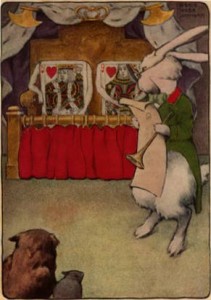
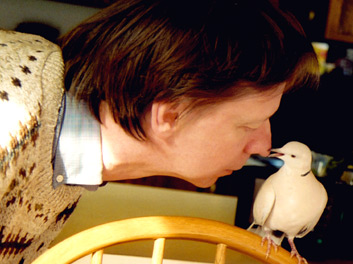
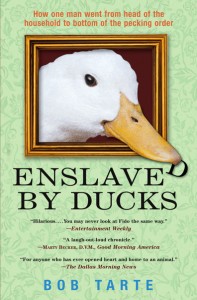 Enslaved By Ducks
Enslaved By Ducks Fowl Weather
Fowl Weather








